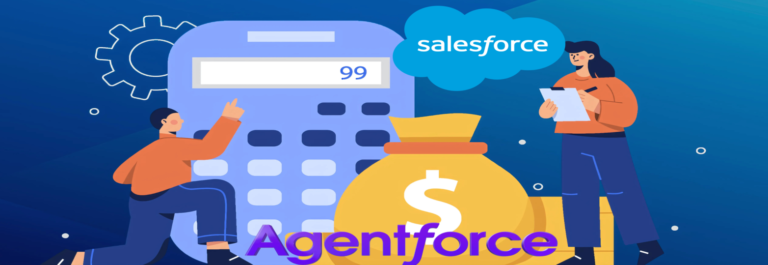Salesforce’s Agentforce shifts enterprise AI pricing from per-seat licensing to per-conversation, enabling scalable automation and payment based on real customer interactions.
Key Insights:
-
- Salesforce broke away from the traditional per-seat model, introducing a flexible per-usage (per-conversation) system. At just $2 per conversation, this outcome-based pricing lowers entry barriers and fuels SMB growth.
-
- Platform & Other segment QoQ (Q3-Q4) growth rose from 2% in 2024 to 5% in 2025, likely supported by Agentforce’s market entry.
-
- By paying only for what they use, businesses can grow smarter and faster — avoiding large upfront investments and adapting their spending as needs evolve.
-
- With 380,000 conversations handled and 84% resolution rates, Agentforce’s success directly lifted Platform revenues.
In the traditional B2B landscape, AI support systems operated using a licensing model. Businesses were required to pay per seat — a model mirrored by Microsoft’s Copilot. While reliable, this structure often necessitated large upfront investments without immediate returns.
Salesforce disrupted this model with the launch of Agentforce, an AI-powered assistant platform designed to transform customer service, sales, and operations. Replacing its Einstein Copilot, Agentforce introduces a new scalable and cost-efficient approach — a pay-per-conversation model.
What Is Agentforce?
Launched in September 2024 at Dreamforce4, Agentforce is built on the Atlas Reasoning Engine, enabling AI agents to process, reason, and autonomously take action on real-time customer data. These agents are deeply integrated with Salesforce tools such as Flow, Apex, and MuleSoft, allowing them to handle tasks traditionally managed by human staff.
Agentforce supports a wide array of functions:
-
- Sales and service automation
-
- Marketing tasks
-
- Commerce workflows
-
- Real-time customer interactions
A New Era of Pricing: Scalable AI Through Per-Interaction Billing
| Model | Description | Cost Structure |
| Einstein Copilot (pre-2024) | Traditional licensing model | Fixed per-user license1 |
| Agentforce (post-2024) | Usage-based billing per interaction | $2 per conversation1 |
Agentforce’s new conversation-based billing system represents a shift toward results-oriented engagement, where each conversation starts with the bot’s initial response and ends when the customer exits, remains inactive for 24 hours, or is escalated to a human agent. With its $2 per conversation pay-as-you-go model3, Agentforce breaks away from traditional SaaS billing, allowing companies to pay only for real, outcome-driven interactions rather than the mere potential to use software. This pricing structure is especially advantageous for small and mid-sized businesses (SMBs), offering scalable AI capabilities with minimal administrative burden.
Financial Impact and Growth Momentum
In FY2025, Salesforce reported impressive gains driven by Agentforce and its AI initiatives:
-
- QoQ growth (Q3-Q4) in the Platform & Other segment in the financial report rose from 2% in 2024 to 5% in 2025.
Platform Revenue

-
- For FY2025 Q42 (Agentforce has been fully operational since Q3 of FY25 – Sept 2024), revenue appears to have risen to about $1,918M with a 5% QoQ growth, a notable jump that we believe is largely driven by Agentforce’s full-scale market entry and its flexible, outcome-based pricing model. Historically, Salesforce’s FY2023 Q42 revenue was approximately $1,557M with 3% QoQ growth, and FY2024 Q42 revenue rose to around $1,720M with 2% growth, highlighting the strong acceleration seen post-Agentforce launch.
This performance underscores the effectiveness of Agentoforce’s usage-based pricing model, which has gained traction among small to mid-sized businesses by aligning cost directly with usage. The resulting growth is evident not just in revenue figures, but also in increased deal volume and broader enterprise adoption, demonstrating solid momentum and market confidence.
Enterprise AI Pricing Strategies: A Competitive Snapshot
As enterprise AI solutions gain traction, leading providers are differentiating themselves through distinct pricing models:
-
- Microsoft Copilot adopts a seat-based pricing model6, charging per user for AI-enhanced productivity tools within its suite—ideal for organizations already invested in the Microsoft ecosystem.
-
- ServiceNow’s AI pricing largely follows a per-user (seat-based) model7, where businesses pay a fixed cost for each user accessing AI capabilities.
-
- Salesforce Agentforce introduces a pay-as-you-go model at $2 per conversation6, allowing businesses to scale usage flexibly and pay only for actual customer interactions—particularly appealing to SMBs and high-growth companies.
📈 Looking to strengthen your growth and pricing strategy?
StratKalytics helps businesses and boutique consulting firms drive growth with data-backed insights, smart pricing strategies, and focused planning.
📩 Get in touch for expert consultation and practical solutions that drive results.
What This Means for the Market
Traditional per-seat licensing toward scalable, value-based billing. By charging only for real interactions, this usage-based approach lowers barriers for small and mid-sized businesses and ensures companies pay in proportion to actual outcomes.
Its impact is evident: strong enterprise adoption, growing recurring revenue, and high-resolution rates—all tied to the flexibility of the pricing model itself. Unlike conventional SaaS billing, this strategy puts customer engagement and ROI at the center, drawing from successful consumer app practices to enhance retention and long-term scalability.
More than a new feature—it’s a pricing innovation redefining how businesses adopt and grow with AI.

